5 Tactics for Short Emails that Pack a Punch
By Liz Willits October 27, 2016
Sometimes, less is more. And when it comes to your email marketing strategy, this can absolutely be true.
While some audiences love to receive a long, descriptive email, others may quickly become bored or overwhelmed by messages that contain a mountain of text.
For these subscribers, a short, snappy, attention-grabbing email is both more engaging and more effective. And as you deliver content your audience wants, it can also mean higher open and click-through rates for you in the long run.
If you’ve tried long-form emails and aren’t seeing results, it may be time to try a short-form email (an email with not much written content) instead.
To help get you started, here are five tactics and examples for writing and designing short form emails your subscribers will love.
1. Convey meaning with images instead of copy.
Instead of using words to convey meaning, you can use images to create connection, feeling and meaning. This is also an easy way to shorten the length of your message.
In this email from Paypal, they use an image to show one of the benefits of their service and to create emotion:
Subject line: STOP! Don’t enter your info repeatedly
Notice how the image demonstrates a benefit of faster checkout times: more family time. And the fall background adds a nice nostalgic touch that can connect with readers.
Challenge: In your next email, try using an image or two instead of additional copy to convey meaning, feeling and product/service benefits. The copy you do choose to include should still be concise, meaningful and relevant.
2. Use powerful words that create mental images.
One of the secrets to writing a great short-form email is to get your reader to mentally engage with your email immediately. Creating mental imagery is a great way to accomplish this. When your reader begins to picture in their mind what you’re writing about, they start to engage personally with your email in a powerful way. And this can get them to click on your call to action.
In this brief email, Airbnb includes words such as “sumo wrestlers,” “up and coming musicians” and “imaginative chefs” to help the reader picture the kind of people they’d meet while using their service:
Subject line: Elisabeth, you have an exclusive invite from Airbnb
They chose these words because they create imagery the moment you read them. How can you think of a sumo wrestler without picturing their iconic outfit? Or a chef without his uniform and bustling kitchen?
These powerful words also create the feeling that the reader will be meeting new and exciting city dwellers, which might be a stark contrast compared to their usual travel adventures. Instead of writing that you’ll “meet new and exciting people” when using the service, they use specific examples to encourage the reader to envision this experience.
Challenge: Experiment with words you wouldn’t normally use in your next email, and be specific about the benefits a reader would gain. Use words that create mental pictures, and don’t be afraid to try ones that are unusual.
3. Use humor in your content.
What are you more likely to fondly recall years later? A college lecture on American history or a comedy show with Kevin Hart?
Unless you’re a history teacher or fanatic, you’ll probably recall Kevin Hart’s best joke over the year George Washington was born (1732, in case you were wondering).
Humor connects with people. It sticks in their memory, lightens their mood and often creates a sense of admiration (especially for a witty joke). And best of all, humor can be a powerful way to convey meaning in fewer words and get people to engage with your emails.
In this email, Really Good Emails adds a witty, humorous tone that simply draws in readers:
Subject line: Announcing our new series—Exploring the magic behind emails
I mean really, who doesn’t sit and wonder at the magic of “David Copperfield, bacon, and ligers” (bacon especially)?
Challenge: Use humor in your next email’s content to connect with your subscribers quickly. Your first sentence can be humorous while your second and third can set the context and encourage people to act. By using humor, you can grab your reader’s attention quickly and create positive vibes that encourage them to click. Which means you’ll need less content later on trying to convince them to act. Just make sure that your humor is relevant to your message and that it’ll make sense to your unique audience.
4. Show off your products.
If you’ve got a great product, let it speak for itself. Instead of writing long descriptions of your products and their benefits, try using images in your emails that’ll show off your product’s benefits with visuals instead of words.
In the below email, Etsy writes very little – just a subject line and brief sentence about how you can find the perfect gift with Etsy. But they include tons of images of their sellers’ products fitted into categories that will help readers find what they’re looking for:
Subject line: The perfect gift does exist
This email needs very little written content, because the images demonstrate the benefits of the products, instead of words.
Challenge: If you have pictures of your product, try sending an email to subscribers that includes those pictures. If you offer a service, try incorporating pictures that demonstrate it in action. For example, if you’re a personal fitness trainer, try including images of you demonstrating a workout routine or guiding clients during a workout. Using pictures can save you from writing a lot of extra content and catch your subscribers’ attention right away.
5. Evoke the senses with descriptive words.
We experience the world with our five senses. So when you incorporate the senses in your emails, you can turn an email into something your reader can feel, smell, see, touch and hear while sitting at their computer hundreds or thousands of miles away. By engaging your subscriber in this way, you can encourage them to act with less written content.
Blue Apron does a great job of using descriptive language in their email below:
Subject line: The apple of our eye? This special Guest Chef recipe & $30 off!
By using powerful adjectives, this email transports the reader from wherever they are to a quaint, charming home. Their headline “Cold Nights, Warm Kitchens” allows readers to envision and feel the warmth of a cozy kitchen during winter.
The words “crisp apples to sweet butternut squash” helps you also imagine the taste of those foods, and the background visuals of this tasty produce evokes the sense of sight to bring it all together.
Challenge: Create an email that appeals to the senses by using adjectives and imagery in your content. You don’t needs lot of email content if your language can engage people right away, and using the senses is a great way to do this. To see if this encourages subscriber engagement, be sure review your click-through rate to see if it’s higher than usual.
Challenge yourself! Write short emails
Although the perfect email length depends on your business needs and audience, keep in mind that you don’t need to write a 200-word email to convince people to act.
With the right words and images, you can get people to engage with just a quick email.
Ready to try one of the challenges above? Get started today and tell me about your experience in the comments section below – I’d love to hear about it!
Want more tips for writing emails? Download our free What to Write in Your Emails guide and get access to an email course and 45+ email templates!

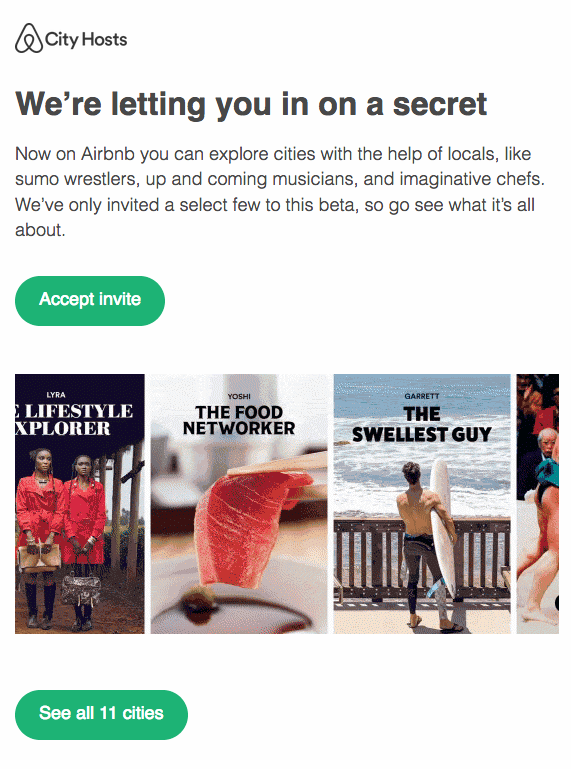
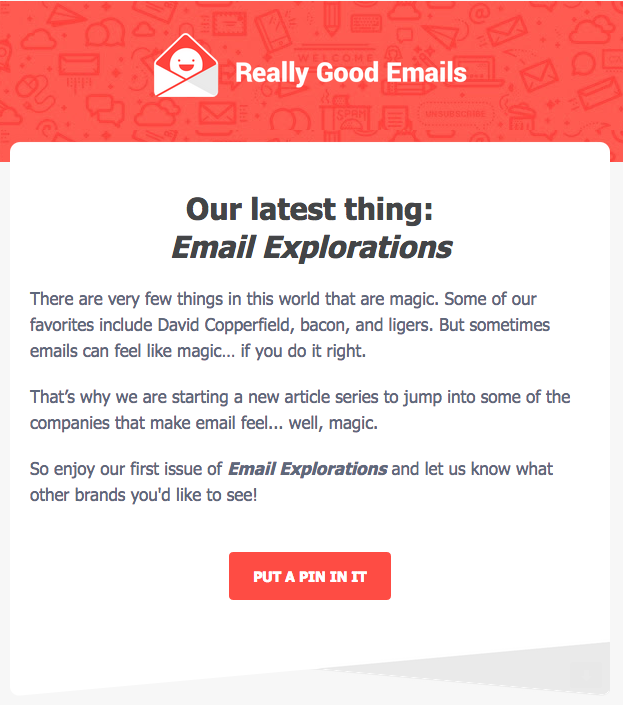
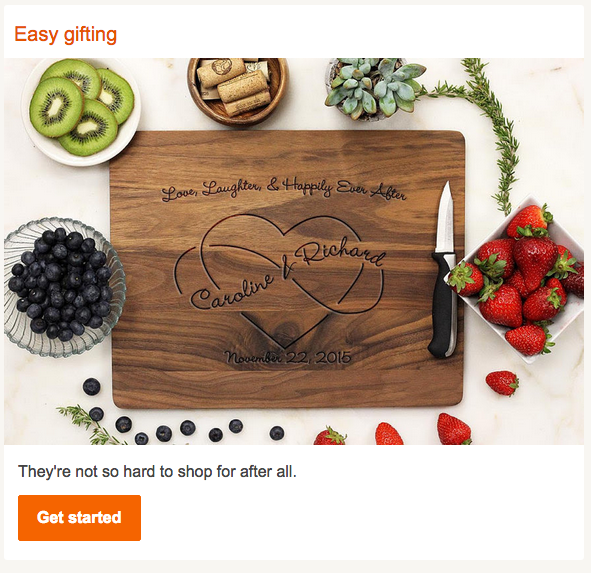
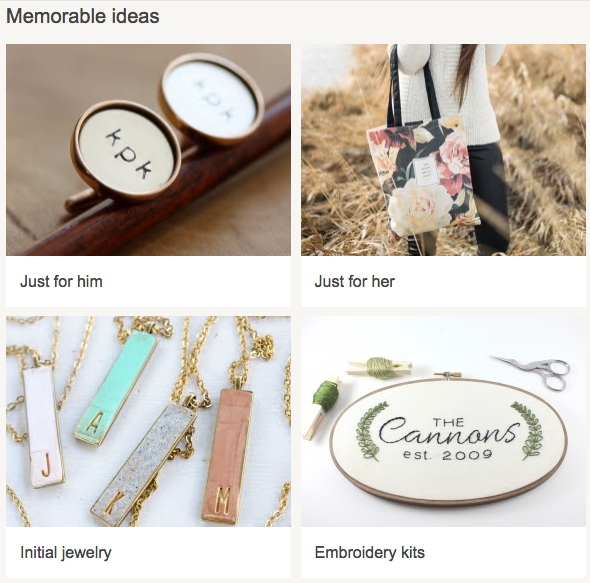

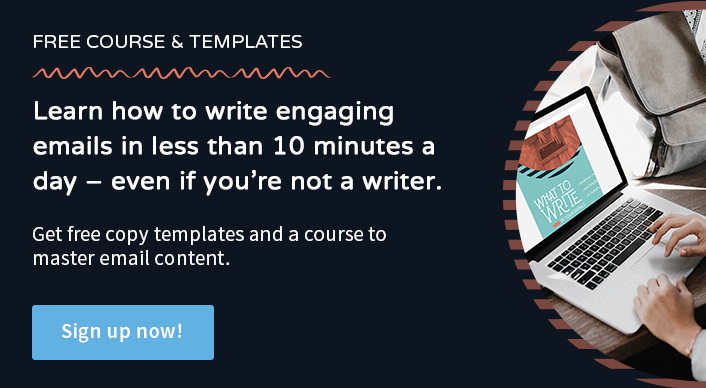
sohbet
10/29/2016 5:21 pmharıka bir yazı olmuş emegınize saglık
James K.
11/3/2016 5:55 pmGreat e-mail tips here! We will try to produce more of a variety of content in our messages. I think that sometimes less is more, like you said. Thank you!
Liz Willits
11/16/2016 2:32 pmI’m glad the tips helped, James!
Valerie L.
11/16/2016 1:41 pmGreat tips for me to try! I will experiment with some shorter e-mails. I tend to be wordy. But, the image method would be good for me. My business is products driven! Thank You!
Liz Willits
11/16/2016 2:32 pmThat’s awesome, Valerie! I’d love to hear about your results. 🙂